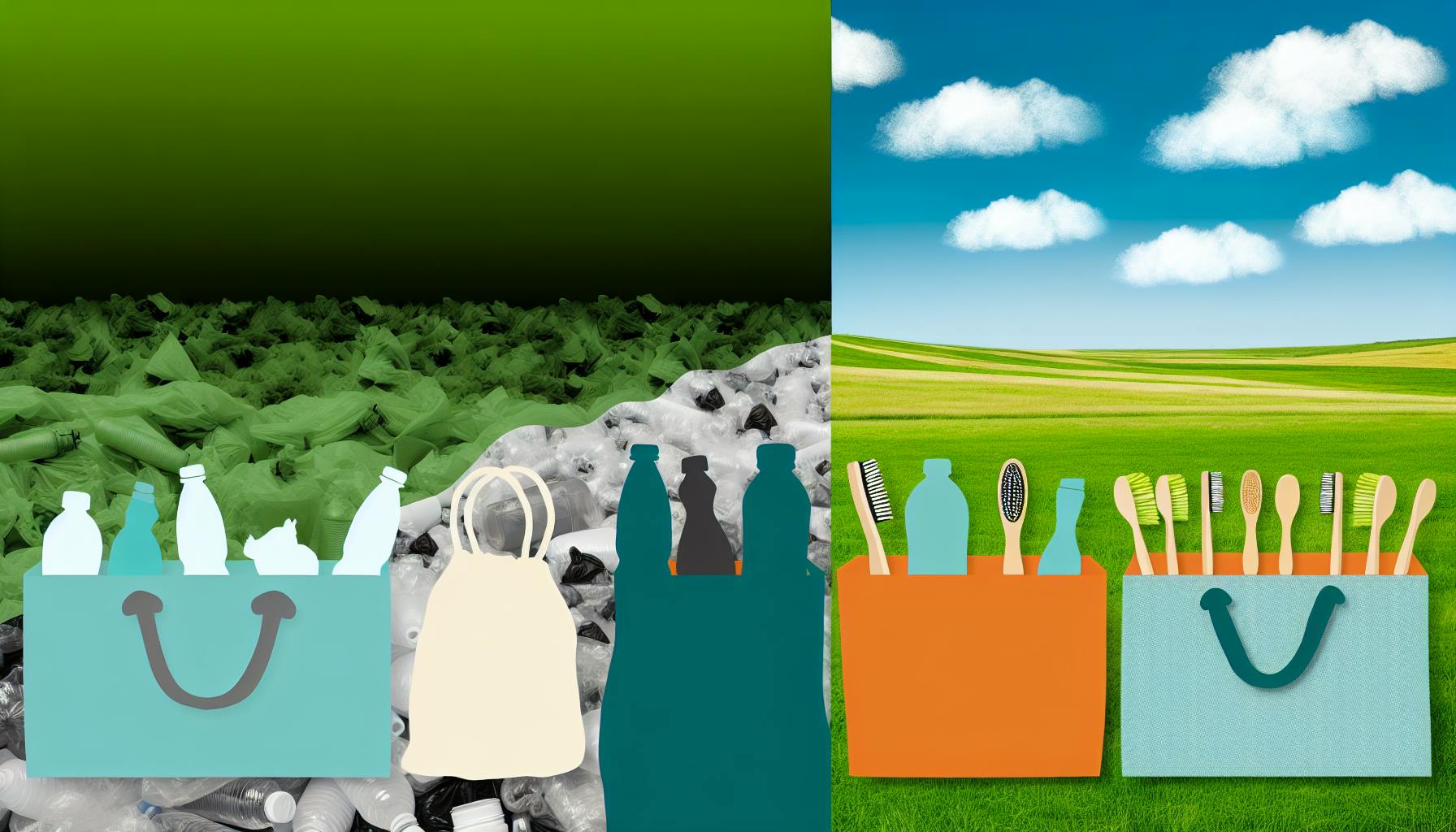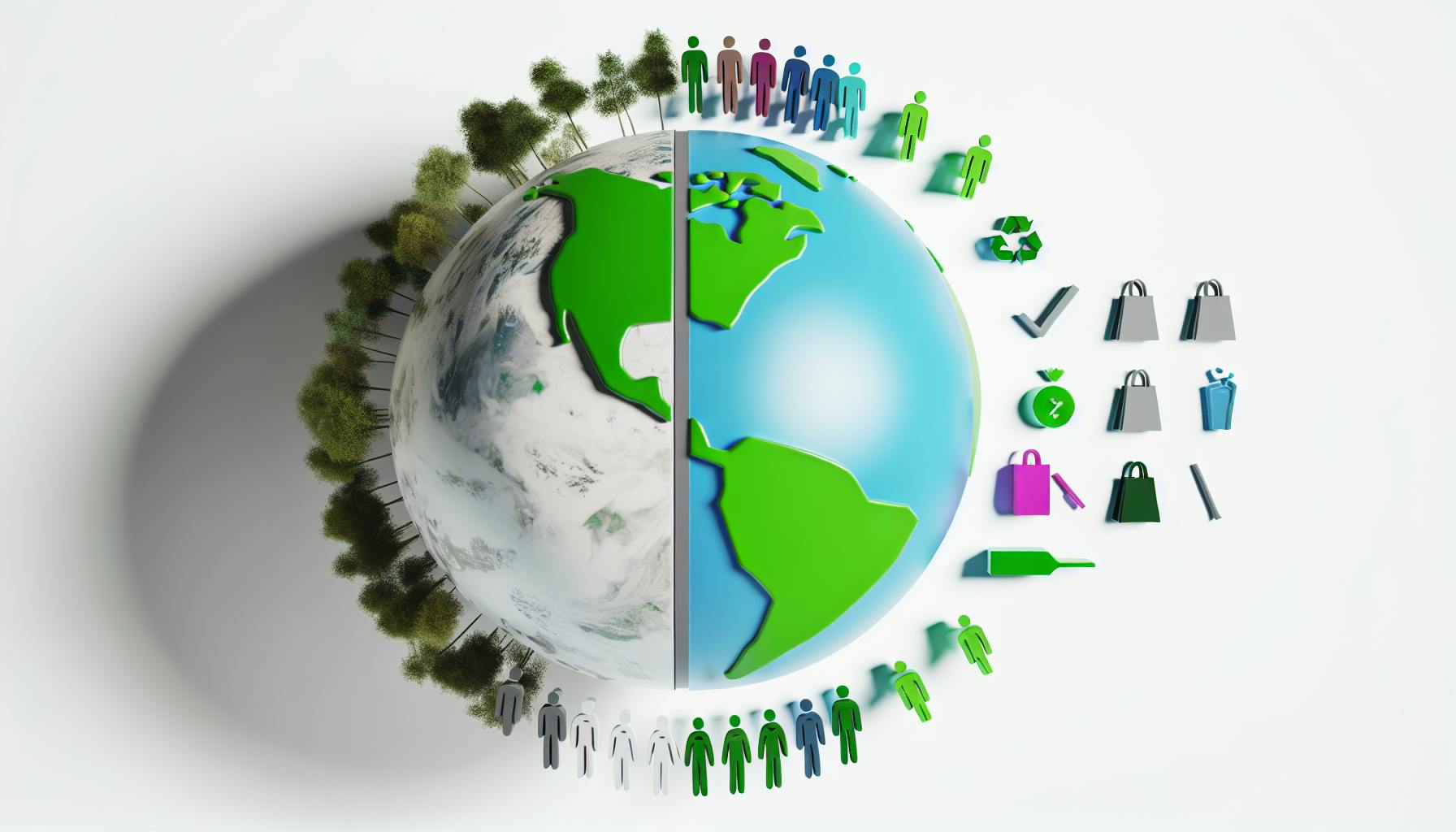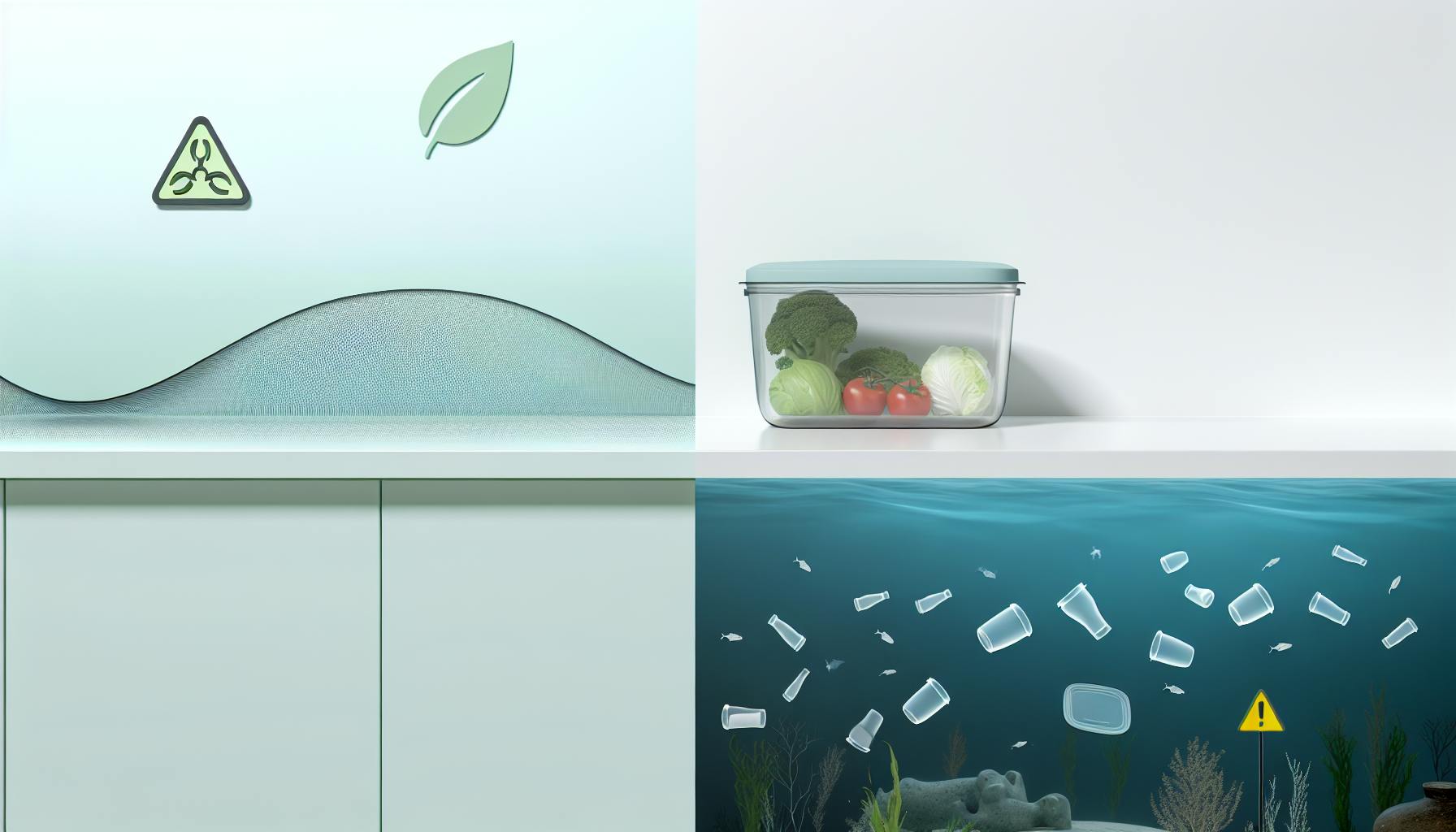: A Concerning Issue
Microplastics, tiny plastic pieces less than 5 millimeters in size, have become a significant environmental and health concern. These minuscule particles can contaminate our food and water sources, posing risks to both human health and ecosystems.
One often-overlooked source of microplastic pollution is the use of reusable food containers. When washed and reused, these containers can break down and release microplastics into the environment, contributing to the overall microplastic problem.
Here's a quick overview of the key points:
- Microplastic Sources: Food packaging, plastic bags, personal care products, and reusable food containers.
- Health Risks: Microplastics can disrupt the endocrine system, cause inflammation, and accumulate in organs. Long-term effects are still being studied.
- Environmental Damage: Microplastics can be ingested by aquatic life, causing physical harm and toxicity, and accumulate in the food chain.
To address this issue, we need to consider proper use and care of reusable containers, explore alternative materials, and support regulations and awareness campaigns.
Related video from YouTube
Comparing Container Materials
| Material | Plastic Shedding | Durability | Cost | Environmental Impact |
|---|---|---|---|---|
| Glass | Low | High | High | Low |
| Stainless Steel | Low | High | Medium | Low |
| Ceramic | Low | High | Medium | Low |
| Silicone | Medium | Medium | Low | Medium |
| Plastic | High | Low | Low | High |
Glass, stainless steel, and ceramic containers are the best choices as they shed little plastic, last a long time, and have a low environmental impact. Silicone is better than plastic but still sheds some plastic. Plastic containers shed a lot of plastic, don't last long, and harm the environment.
By understanding the sources and impacts of microplastics, and taking steps to reduce their use, we can work towards a more sustainable and healthier future.
Microplastics in Reusable Food Containers
What are Microplastics?
Microplastics are tiny plastic pieces less than 5 millimeters in size. They come from various sources, including food packaging, plastic bags, and personal care products. When reusable food containers are washed and reused, they can break down and release microplastics into the environment. These microplastics can then contaminate food and water.
There are different types of microplastics:
| Type | Description |
|---|---|
| Fibers | Come from synthetic clothing |
| Fragments | Broken-down pieces of larger plastic items |
| Beads | Small, spherical plastic particles used in personal care products |
Understanding the sources and types of microplastics is important to address the issue of microplastic pollution from reusable food containers.
Health Concerns
Ingesting microplastics can cause health issues. Research suggests that microplastics can:
- Disrupt the endocrine system
- Cause inflammation
- Accumulate in organs
The long-term effects of microplastic ingestion are not fully known. However, it's important to minimize exposure. Reusable food containers can contribute to microplastic pollution, which can then enter the food chain and be consumed by humans.
More research is needed to understand the health implications of microplastic ingestion. But reducing microplastic use and promoting sustainable practices are crucial for protecting human health.
Environmental Damage
Microplastic pollution harms the environment. When microplastics enter the environment, they can:
- Be ingested by aquatic life, causing physical harm and toxicity
- Accumulate in the food chain, leading to the biomagnification of pollutants
This can have severe consequences for ecosystems and the environment.
Reusable food containers contribute to microplastic pollution, which can then enter waterways and harm aquatic life. Addressing the issue of microplastic pollution from reusable food containers is essential to protect the environment and promote sustainability.
sbb-itb-1dc3f59
Reducing Microplastic Contamination
Cutting down on microplastic pollution from reusable food containers requires proper use, alternative materials, and regulations.
Proper Use and Care
To minimize microplastic shedding, follow these tips:
- Avoid high temperatures that can cause containers to break down.
- Clean thoroughly with mild soap and water, no harsh chemicals.
- Inspect regularly for wear and tear, replace if needed.
- Don't stack or nest containers, as this can cause scratching.
Following these simple steps can significantly reduce microplastic release.
Alternative Container Materials
While plastic is convenient, consider these alternatives that shed less microplastic:
| Material | Durability | Cost | Environmental Impact |
|---|---|---|---|
| Glass | High | High | Low |
| Stainless Steel | High | Medium | Low |
| Silicone | Medium | Low | Medium |
Glass and stainless steel are durable options with low environmental impact. Silicone is more affordable but less durable.
Regulations and Awareness
To address microplastic pollution, regulatory measures are needed:
- Stricter guidelines for manufacturing and labeling reusable containers
- Incentives for using alternative materials
- Awareness campaigns educating consumers on microplastic risks
Governments and manufacturers play a crucial role in reducing microplastic shedding through regulations and education.
Comparing Container Materials
| Material | Plastic Shedding | Long-Lasting | Cost | Environmental Impact |
|---|---|---|---|---|
| Glass | Low | High | High | Low |
| Stainless Steel | Low | High | Medium | Low |
| Silicone | Medium | Medium | Low | Medium |
| Ceramic | Low | High | Medium | Low |
| Plastic | High | Low | Low | High |
This table compares different materials used for reusable food containers:
-
Glass and stainless steel are the best options. They shed very little plastic, last a long time, and have a low environmental impact. However, glass containers can be expensive.
-
Ceramic containers also shed little plastic, are durable, and have a low environmental impact. Their cost is moderate.
-
Silicone containers are affordable but shed some plastic. They have a medium lifespan and environmental impact.
-
Plastic containers shed a lot of plastic, don't last long, and harm the environment. However, they are inexpensive.
To reduce plastic shedding and environmental damage, choose glass, stainless steel, or ceramic containers when possible. Silicone is a better option than plastic but still has some drawbacks.
Taking Action
Choose the Right Containers
When picking reusable food containers, go for materials that don't shed plastic, like:
- Glass: Durable and long-lasting with low environmental impact, but can be pricey.
- Stainless Steel: Tough and eco-friendly, with a moderate cost.
- Ceramic: Sheds little plastic, lasts a long time, and is environmentally safe, with a mid-range price.
Avoid plastic containers as they shed a lot of microplastics and harm the environment.
Proper Care
To extend the life of your reusable containers and prevent plastic shedding:
- Wash thoroughly with soap and water.
- Don't use harsh chemicals or high heat.
- Check regularly for wear and tear, and replace if needed.
- Don't stack or nest containers to avoid scratching.
Support Initiatives
Back groups and efforts that work to cut microplastic pollution and promote sustainable practices. Encourage your local government to:
- Implement rules addressing microplastic contamination.
- Promote the use of eco-friendly alternatives.
| Container Material | Plastic Shedding | Durability | Cost | Environmental Impact |
|---|---|---|---|---|
| Glass | Low | High | High | Low |
| Stainless Steel | Low | High | Medium | Low |
| Ceramic | Low | High | Medium | Low |
| Silicone | Medium | Medium | Low | Medium |
| Plastic | High | Low | Low | High |
This table compares different materials for reusable food containers based on:
- Plastic Shedding: How much plastic the material sheds.
- Durability: How long the material lasts.
- Cost: The price of the material.
- Environmental Impact: The material's effect on the environment.
Glass, stainless steel, and ceramic are the best choices as they shed little plastic, last a long time, and have a low environmental impact. Silicone is better than plastic but still sheds some plastic. Plastic containers shed a lot of plastic, don't last long, and harm the environment.
FAQs
How can I reduce microplastics in my food?
To cut down on microplastics in your food, follow these simple tips:
- Use glass containers instead of plastic when heating food in the microwave. Heating plastic can release millions of microplastic particles into your food.
- Filter your drinking water. Plastic pollution can contaminate water sources, leading to microplastic particles in your tap water.
By taking these precautions, you can significantly lower your exposure to microplastics from food and beverages.
Do plastic containers release microplastics?
Yes, plastic containers can shed microplastics, especially when storing hot food. One study found microplastics in all reusable plastic takeout containers from restaurants. Storing hot food in these containers accelerates the leaching of microplastics and other potentially harmful substances.
To avoid this, choose alternative container materials like:
| Material | Microplastic Shedding | Durability | Cost |
|---|---|---|---|
| Glass | Low | High | High |
| Stainless Steel | Low | High | Medium |
| Ceramic | Low | High | Medium |
| Silicone | Medium | Medium | Low |
| Plastic | High | Low | Low |
Glass, stainless steel, and ceramic containers shed fewer microplastics and are more eco-friendly, though they may cost more. Silicone is a better option than plastic but still sheds some microplastics.


